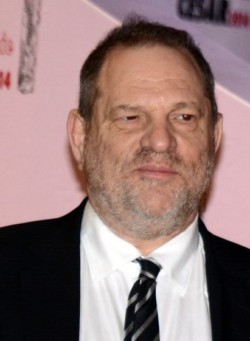Weinstein: The Inside Story – What lessons can Hollywood learn from this pervasive scandal?
The first post-Weinstein Academy Award ceremony has been and gone. The #MeToo and Time’s Up movements echo across social media. And a little over a week ago, BBC Panorama, in collaboration with PBS Frontline, aired an investigative documentary entitled Weinstein: The Inside Story detailing the trajectory and precipitous fall of disgraced movie mogul Harvey Weinstein.
The broadcast provided a comprehensive account of Weinstein’s abusive behaviour, spanning across decades, and exposed Hollywood’s culture of complicity which actively enabled such conduct.
Through several individual testimonies, victims describe an unnervingly ritualistic narrative of abuse which has now become familiar – massage requests, bathrobes and hotel suites. While these stories have become common knowledge, the programme uncovers how Weinstein was able to shroud himself with protection, suppressing his crimes and creating an unbreakable silence.
In attempting to ask how such heinous abuse remained hidden, the programme establishes three essential modes of concealment:
Manipulation of the Media
With great power comes great influence, and Weinstein was able to bury damning information through forming paid, mutually beneficial relationships with tabloid journalists and trading salacious celebrity stories. The mogul even formed and financed the publication Talk Magazine, commissioning articles from journalists who had condemning stories about him that he did not want printed.
Non-Disclosure Agreements
Weinstein used non-disclosure agreements as another form of business transaction. Such confidentiality clauses keep victims silent and allowed his sexual predation to continue without the fear of repercussion or retaliation.
Private Detectives and Spies
In an attempt to discredit and dig up dirt on his accusers and stop them from going public with sexual misconduct claims, Weinstein allegedly hired K2 intelligence and the Israeli Firm Black Cube to dig up dirt on his accusers; actresses and reporters including Rose McGowan and Ronan Farrow.
The documentary revealed, in an utterly compelling and chilling manner, how

Image: Wikimedia Commons
Weinstein’s immense power and influence left him untouchable, and his despicable conduct remained hidden from public view. The BBC/PBS collaboration paints a rather toxic portrait of Hollywood; a cesspit of abuse and exploitation masked by glitz and glamour. As former Miramax executive Paul Webster remarked: “It’s part and parcel of doing business in Hollywood. This is a filthy stables and Harvey is merely the guy who has taken the biggest dump in it”.
While the Weinstein case is a particularly extreme example, it epitomises the systemic failures in Hollywood that must be tackled. Clearly, such abuses of power will continue to occur unless new structures are introduced. But what must Hollywood do in order to evolve? Can a system so entrenched in mistreatment and exploitation actually change? And if so, what might this change look like? Examples of strategies may look as follows…
Create a Continuous Dialogue
Not only must the film industry tackle and deconstruct intrinsic sexism; but challenge the environment in which harassment thrived and continue the dialogue that has begun. Demonstrated through the binding non-disclosure agreements which Weinstein employed to silence victims, Hollywood’s veil of secrecy allowed such abuse to escalate and continue. Conversely, the Time’s Up and #MeToo movements have seen celebrities wearing all black and donning Time’s Up badges in solidarity – but will this create systematic, sustainable change?
In order for these campaigns to elicit progress, they must confront the inherent power structures which exist in Hollywood rather than individual scandals. The facts still remain that 94% of women in Hollywood say they have endured sexual harassment or assault, and women still only represent 4% of film directors. These stubborn statistics simply confirm that men continue to gatekeep Hollywood, exerting creative and economic control. Crucially, the movements must have momentum, and the outpouring of women speaking out should be channelled into productive action which challenges the processes and legislations that are holding women back. Perseverance and patience is key.
More Women in Executive Positions
In the programme, Webster that he knew he was “making a deal with the devil” when he joined Miramax and confessed: “I think looking back that I did know and I chose to suppress it, I chose to hide from that fact. I think we were all enablers. I think we were all complicit. Evidently, rather than treating Weinstein as an isolated case, Hollywood must tackle its flawed foundational system and willing participants. The industry is undoubtedly still dominated by men and such dominance breeds a toxic power imbalance. Men like Weinstein are able to harass and intimidate when they are the gatekeepers to opportunity, and have the ability to create and destroy careers. Through placing more women in roles of authority and elevating female voices; dismantling and diluting the old boys club and balancing the power differential – a more diverse, inclusive and safe environment will surely ensue.
Weinstein: The Inside Story brought to light the true horror and extent of Weinstein’s crimes, as told by the women themselves. The documentary proves that Hollywood’s sordid guise has been punctured. It certainly seems that the tide is beginning to turn, and there is a real appetite for change. One can only hope that the industry will use the tools at its disposal to inspire a paradigm shift.
You can read more about Hollywood’s history of cover-up here

Comments